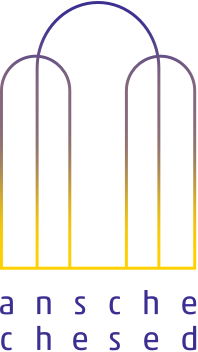Davening Shema in public, you’ve probably noticed people making certain small but distinctive verbal gestures. When saying Adonai echad, people often pound on that final dalet, so that it sounds like this: echad-DUH. And toward the end of the third paragraph of the Shema, people stress the letter zayin in the word tizkeru, so that it sounds like this: tiZZZ-keru.
Both of these pronunciation quirks date back to Talmudic teachings. The first, however, is generally misunderstood, due to a change in Hebrew accents over the centuries.
The emphasized dalet of echad comes from Berakhot 13b:
Summachos said: All who lengthen ehad, their years are lengthened. Said. Rabbi Acha b. Yaakov: Lengthen with the dalet. … Rabbi Yermiyah sat before Rabbi Hiyya b. Abba, who watched him extending at great length. He [R. Hiyya] told him: once you have mentally proclaimed God’s majesty above and below and in all four cardinal directions, you need go no longer.
Now, you might have noticed that while the Talmud says one shouldlengthen the D-sound, that hard dalet [echad-DUH] is over stressed, but not in any way longer. A “D” is a “plosive” or “stop consonant,” in which air-flow is stopped. How can you lengthen that? You cannot.
But in ancient Hebrew, dalet was one of six letters whose pronunciation could be either “hard” [i.e. plosive] or “soft” [fricative], expressed by writing or removing a dot, or dagesh. We are still familiar with three of them:
· ב – which can be b/v, boy or voyage.
· כ – which can be k/kh, kite or the end of barukh
· פ – which can be p/f, porridge and forage.
Most of us also remember the Ashkenazi ת – which can be t/s, like tale orsale. In addition, in early Hebrew, and in Yemenite accents still today, גcould be a hard or soft G, as in gain or gentle.
And way back when, ד could be either hard like door or a soft, fricative, buzzing made by the tongue, like a th-sound. Now that can be lengthened! Evidently Summachos and the other Sages were drawing out their Shema by buzzing through a lengthy echath-th-th-th.
Next we turn to the Jerusalem Talmud Berakhot 2.4 [16b in the Vilna ed.]
Rabbi Avdimi of Haifa said in the name of Rabbi Levi b. Sissi You must stress the zayin of lema’an tizkeru, “so that you remember and perform the mitzvot …”
Tizkeru, with a fricative Z-sound, means “remember.” But if you used a sibilant S-sound, the word would be tiskeru, meaning “so that you would be rewarded” for performing Mitzvot. A little too transactional and not very worshipful. Don’t say that.
With those teachings and the sound of the buzzing D- and Z- sounds in your ear, let’s try to think like poets, and hear or imagine what a synagogue might have sounded like during Shema. Like a chorus of worshipful buzzing bees! Or imagine what a meadow sounded like, as swarms of bees hovered over flowers, drinking in sweetness. Like a chorus of praying Jews!
That is exactly how the great 11th century Spanish Jewish poet Shlomo ibn Gabirol rendered it in this brief and beautiful lyric. If you can recite this to yourself in Hebrew, try to exaggerate the soft dalets, tavs and zayins, making them buzz a little longer than normal, especially in the second line, and you’ll hear the sound of the bees davening in the meadow.
לְאִטֵּךְ דַּבְּרִי שִׁירֵךְ, דְּבוֹרָה, / אֲשֶׁר קִרְיַת “שְׁמַע” מִפִּיךְ יְקֹרָא,
מְיַחֶדֶת וּמַאְרֶכֶת בְּ”אֶחָד” / וּמַתֶּזֶת בּ“ְזֵכֶר“ רָם וְנוֹרָא,
אֲשֶׁר נָתַן דְּבַשׁ תַּחַת לְשׁוֹנֵךְ / וְשָׂם לָךְ לַהֲדֹף אוֹיְבֵךְ מְררָה.
הֲלֹא אִם אַתְּ בְּעֵינַיִךְ קְטַנָּה – / כְּבוּדָּה אַתְּ וְלָךְ מִשְׁפַּט בְּכוֹרָה.
חֲמוּדוֹת טִהֲרוּ אוֹתָךְ, וְאֵינֵךְ / כְּשֶׁרֶץ עוֹף אֲבָל צִפּוֹר טְהוֹרָה.
Sing your song slowly, little bee / proclaiming the recitation of Shema
Lengthily unifying the One / buzzing, remembering the Most High
Who hid honey beneath your tongue / and gave you venom to drive off your enemy
Though you may seem small in your own eyes / you are grand, a true first born
Your merits refine you, you are no bug / but as pure as the birds in the air





